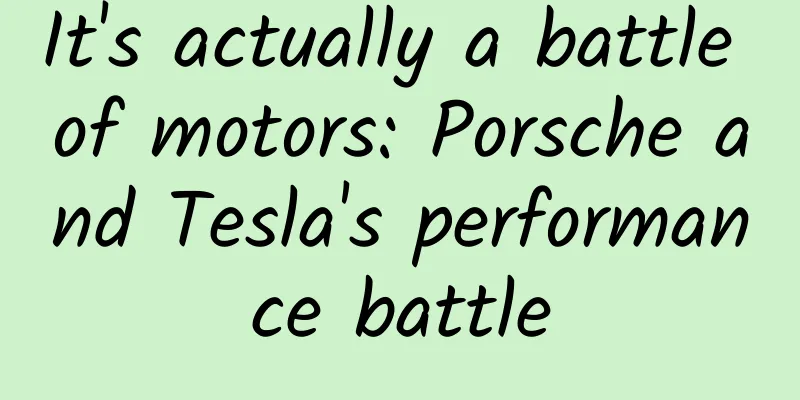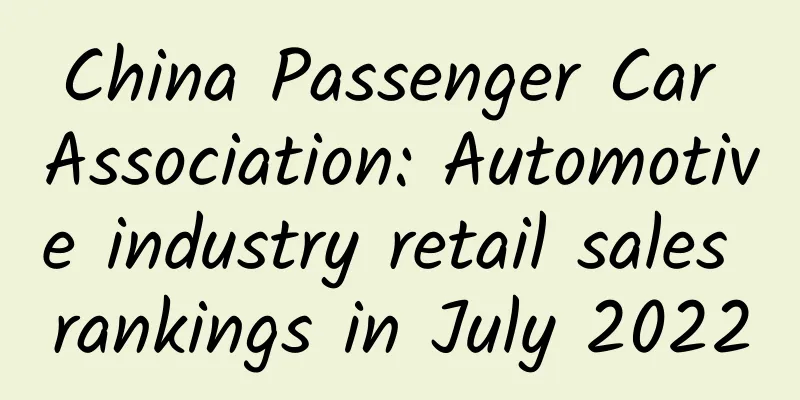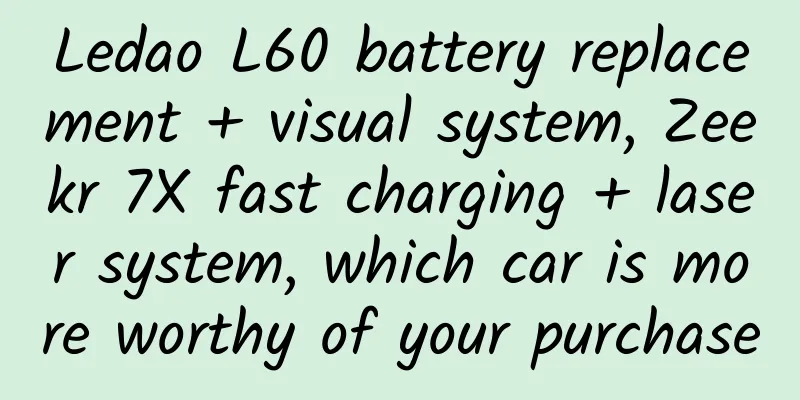It's actually a battle of motors: Porsche and Tesla's performance battle

|
1. Why did Porsche choose permanent magnet synchronous motors? I believe that the Tesla Model S is fast, so fast that today people think of it when they mention high-end pure electric brands. Since the rising star is so ambitious, traditional car companies will naturally not sit idly by. Porsche is ready to take on the challenge with the Taycan, but before that they made a concept car called Mission E Cross Turismo to test its hand. But do you know? In terms of the technology of the core component drive motor, Tesla seems to be a little "backward". There are many stories about drive motors. Today, I will talk about those things about motors with my friends. Tesla Model S P100D has a 0-100km/h acceleration time of 2.7 seconds, which is also very fast among fuel vehicles. Porsche, a veteran among traditional car companies, which was very popular in the era when internal combustion engines dominated, also made the Mission E Cross Turismo with a 0-100km/h acceleration time of less than 3.5 seconds to prove that it is still powerful in electric vehicles. Although it is a concept car, it is already very powerful. However, the two have chosen completely different technical routes. Who will be the real winner? After reading the following, you have read 70% of the article: 1. Porsche and Tesla use different drive motor technology routes, the former is a permanent magnet synchronous motor, and the latter is an induction asynchronous motor; 2. Permanent magnet synchronous motors have advantages such as high efficiency and small size, but they are relatively expensive and are greatly affected by temperature changes; 3. Induction asynchronous motors have the characteristics of low cost and relatively high reliability, but high energy consumption is their biggest shortcoming; 4. Tesla once paid a fine of about 70,000 yuan for "excessive emissions" to its car owners due to its high motor energy consumption. ● Twin brothers: look similar, but have completely different personalities Permanent magnet synchronous motor and AC asynchronous motor are like a pair of twin brothers, they look very similar, but they have different temperaments. The two motors are roughly the same in basic structure and appearance, and are composed of common components such as stator, rotor, motor housing, etc. However, there are differences in the structure, materials and working principle of the rotor. Permanent magnet synchronous motor is a kind of AC motor, and its rotor is made of steel with a permanent magnetic field. When the motor is working, the stator is energized to generate a rotating magnetic field to drive the rotor to rotate, and "synchronous" means that in steady-state operation, the rotation speed of the rotor is synchronized with the rotation speed of the magnetic field. Induction asynchronous motors are also AC motors. The rotor is made of metal materials with good conductivity, such as aluminum and copper, and most rotors adopt a squirrel cage structure. When working, the stator is energized, and the interaction between the induced current and the rotor generates electromagnetic torque, thereby rotating the rotor. "Asynchronous" means that when running, the speed of the rotor is always less than the speed of the rotating magnetic field, so it is called asynchronous. To put it simply, both motors are AC motors. The rotor of the permanent magnet synchronous motor has its own magnetic field, while the rotor of the induction asynchronous motor is just a conductor and does not have a magnetic field. It is only after power is turned on that an induced magnetic field is generated to interact with the stator. Due to the different technical routes, the two motors have their own characteristics. Next, let's talk about their respective advantages and disadvantages. ◆ Why did Porsche choose permanent magnet synchronous motor? Let's look at these two types of motors separately in conjunction with the models mentioned above. The Mission E Cross Turismo, unveiled at the 2018 Beijing Auto Show, is equipped with two permanent magnet synchronous motors, which are arranged between the front and rear axles and can output power at the same time to achieve four-wheel drive. This layout can achieve four-wheel drive while making the front and rear weight distribution more even. With dual motors working simultaneously, the Mission E Cross Turismo's power system has a maximum power of 600Ps (440 kilowatts), 0-100km/h acceleration time is within 3.5 seconds, and acceleration to 200km/h takes only 12 seconds, which is enough to crush fuel supercars. This is also the result of the Germans' decision to quickly transform and enter the pure electric field. After all, for these supercar professionals, it is worth doing everything to win. ■ High energy conversion rate, suitable for low speed and complex and changeable road conditions One of the characteristics of permanent magnet synchronous motors is the high energy conversion rate, which can reach more than 90%. In comparison, gasoline engines, which convert chemical energy into kinetic energy at an efficiency of only 35%, and induction asynchronous motors, which convert electric energy into kinetic energy at an efficiency of 85%-90%, pale in comparison. Secondly, its speed range is relatively large. The term "speed range" may be a bit too obscure. To put it simply, it can adapt to the power requirements of vehicles at low and high speeds, and maintain a relatively high energy conversion efficiency in all working conditions. In other words, whether in urban congestion or high-speed conditions, permanent magnet synchronous motors can provide the power performance required by vehicles while being relatively energy-efficient. Finally, it is small in size and light in weight, which is a feature of induction asynchronous motors with the same power density. For example, although both athletes can lift 100kg, weightlifters are much smaller than sumo wrestlers, which is why weightlifters have a higher "power density". Small size can bring more advantages to the overall layout of the vehicle. The front cabin and trunk of the vehicle can be designed with more storage space, and some expansion space for power batteries can be designed on the chassis, etc. It is also conducive to the lightweight design of the vehicle. ■ Relatively high cost, performance is affected by temperature changes In addition, permanent magnet synchronous motors are not without disadvantages. Compared with induction asynchronous motors, theoretically, their unit power cost is higher, that is, the cost of permanent magnet synchronous motors is higher for two motors of the same power. Another problem is that the rotor made of permanent magnet material will cause demagnetization with the drastic change of temperature, which will reduce the performance of the motor. This feeling is a bit like a person who becomes dehydrated after going to a hot desert, which leads to a decline in body function. 2. Are AC asynchronous motors really “backward”? ◆ The advanced Tesla used the “backward” AC asynchronous motor? Let's look at the Tesla Model S P100D. Its 0-100km/h acceleration time is only 2.7 seconds when the violent mode is turned on, and the maximum speed is also 250km/h. Such excellent performance is due to its seemingly "backward" induction asynchronous motor. Why is this motor "backward"? This is because some relatively low-end pure electric vehicles, such as the so-called elderly scooters and battery vehicles in the park, mostly use induction asynchronous motors. So labels such as "cheap" and "backward" are attached to this motor. But before Tesla's success, most people, including me, didn't know that induction asynchronous motors could actually achieve such powerful performance. ■ Relatively low cost, performance is not affected by temperature Looking at these data, we can really use "terrible" to describe this car. So what other advantages does its powerful "heart" have? First of all, compared with permanent magnet synchronous motors, the cost of induction asynchronous motors is relatively low, mainly because there is no need to use expensive permanent magnet materials to manufacture the rotor. Secondly, the magnetic field of its rotor is an electromagnetic field formed after power is turned on, so the magnetic field of the rotor will not be demagnetized, and the working environment temperature it can adapt to is wider than that of permanent magnet synchronous motors. ■ Relatively high energy consumption, low-speed performance is not as good as permanent magnet synchronous motor Due to the structure of the induction asynchronous motor, if you want it to be more powerful, the conductor inside the motor must be increased in size, so the induction asynchronous motor with the same power as the permanent magnet synchronous motor will be relatively larger and heavier. The side effect is that it takes up more space in the car, adds to the vehicle's own weight, and increases its own energy loss. However, the Model S P100D makes up for this deficiency with a 100kWh ultra-large capacity battery. However, the motor is heavy, and the battery with an ultra-large load is certainly not light, so its energy conversion efficiency will be affected by its own weight and reduced. Secondly, its speed regulation range is small, and the energy conversion efficiency is relatively high under high speed conditions. This results in the Model S P100D's energy consumption being greater than that of a permanent magnet synchronous motor of the same power when driving at low speeds; and at high speeds, although the energy conversion efficiency of the induction asynchronous motor is higher under such conditions, the high energy consumption caused by wind resistance causes the vehicle to consume power very quickly. In summary, the Model S P100D consumes more energy than a permanent magnet synchronous motor of the same power under all conditions. Simply put, it consumes electricity at all times. ● Which one will become the mainstream, permanent magnet synchronous or induction asynchronous? Through two representative cars, we have a preliminary understanding of the two motors with different technical routes. So which one will become the future development trend? Before drawing a conclusion, let's first summarize the characteristics of these two motors. From the advantages and disadvantages of the two motors, the permanent magnet synchronous motor has a large power density and a high energy conversion efficiency in both low-speed and high-speed conditions. Therefore, compared with the induction asynchronous motor, which has a higher efficiency in high-speed conditions, it is more suitable for urban roads with more low-speed conditions and frequent starting and stopping. This also explains why permanent magnet synchronous motors are in the mainstream position in the pure electric models currently produced. Another reason is that most pure electric vehicles do not pursue extremely high performance. Even if the unit power cost of permanent magnet synchronous motors is high, the motor power used by each company is not high enough to significantly affect the cost of manufacturing the car. Therefore, except for performance cars, car companies will not consider using the technical route of induction asynchronous motors because of this. Then Tesla also knows that the induction asynchronous motor has the disadvantage of relatively high energy consumption under low-speed conditions, but why does it insist on using this motor? Is it just because of the low cost? Not entirely, Tesla has other considerations for choosing this technical route. Among them, the most important reason is that the material used to make permanent magnet rotors, neodymium iron boron, is a scarce resource for the United States. Neodymium iron boron permanent magnet material is a rare earth resource. For countries with a lack of rare earth resources or underdeveloped rare earth industries, the technical solution for automotive power motors is related to national security, so the "American" uncles still insist on the "technical barriers" of induction asynchronous motors. But in comparison, Europeans are not as "overly nervous" as Americans about rare earth resources, and many European companies still choose the technical route of permanent magnet synchronous motors. Since we are talking about rare earth resources, here is another little-known fact for everyone. my country and Japan have absolute inherent advantages in rare earth resources compared to other countries. my country has 70% of the world's rare earth resources, and the total output of NdFeB magnetic materials reaches 80% of the world (although the output of high-end NdFeB is limited). Japan is a big country in the rare earth industry. The top three NdFeB companies in the world: Sumitomo Special Metals, Shin-Etsu Chemical Industries, Ltd. and TDK Group are all Japanese companies, and their strength can be seen. Therefore, it is common to use permanent magnet synchronous motors on pure electric models of Chinese and Japanese brands. However, there is news that Tesla has also begun to change its technology route to permanent magnet synchronous motors. Previously, overseas media reported that when interviewing Tesla motor designer Konstantinos Laskaris, he revealed that Tesla MODEL 3 will abandon the use of induction asynchronous motors and use permanent magnet synchronous motors instead. According to common sense, this is Tesla's "return to the right path" and changed its technology route in order to improve the energy conversion efficiency of the motor, reduce energy consumption, and increase the range. But there is another reason that may also be the fuse that led Tesla to change its technology route. ● Old gossip: Tesla was fined for "excessive emissions" Do you still remember that in 2016, a Southeast Asian country known as the "Garden City" issued the first "carbon emission exceeding standard" ticket to Tesla. With this ticket, the Tesla owner paid a fine equivalent to about RMB 70,000. It is strange to say that as a low-carbon, environmentally friendly and zero-pollution pure electric vehicle, how could it be charged with "excessive emissions" in Singapore? The situation at that time was like this. When the Tesla Model S that was punished was tested for the Singapore government's vehicle carbon emission standards, it was told that the car consumed 444Wh of electricity per kilometer (44.4kWh/100km). According to Singapore's relevant regulations, for all electric vehicles, the electric energy consumption standard is 0.5g/Wh of carbon dioxide. In other words, the Model S's carbon dioxide emissions were 222g per kilometer, while the carbon emissions of an ordinary fuel vehicle that consumes 7L of fuel per 100 kilometers are 189g, so Tesla was judged to have exceeded the emission standards. However, this case has caused a lot of controversy in the field of pure electric vehicles around the world. Tesla CEO Musk has also asked the Singapore government for justice on this matter, but with real data as evidence, he can only accept the punishment obediently. But it is unknown whether Musk sponsored the Model S owner with the fine. With such a painful lesson, Tesla began to embark on the road of "energy conservation and emission reduction", such as optimizing the control logic of the electronic control system to reduce energy consumption. However, when it comes to Model 3, it may be because of the smaller model and the increasing requirements of countries around the world for low energy consumption. This led to the news that Model 3 will use permanent magnet synchronous motors from Tesla. Summary of the full text: In fact, permanent magnet synchronous motors and induction asynchronous motors are the two main technical directions in the field of pure electric vehicles. It is not possible to comment on which one is better or worse. It still depends on the usage scenario and the original design intention of the vehicle. Under the same power conditions, permanent magnet synchronous motors are smaller in size and more efficient, and are more suitable for working environments with complex road conditions and frequent starts and stops; while induction asynchronous motors have relatively low costs and are less affected by ambient temperature changes, and are more suitable for driving on high-speed roads. It can be said that the two motors have their own advantages. With the continuous advancement of permanent magnet material technology, permanent magnet synchronous motors have gradually made breakthroughs in high speeds, and can currently reach 16,000 rpm or even higher. In addition, in the face of regulations in some countries, car companies have to find ways to reduce energy consumption to meet the requirements of local policies. Therefore, it can be seen that in passenger cars, whether they are family cars or performance cars, before newer and more efficient technologies emerge, the application of permanent magnet synchronous motors in power systems will be a major trend. As a winner of Toutiao's Qingyun Plan and Baijiahao's Bai+ Plan, the 2019 Baidu Digital Author of the Year, the Baijiahao's Most Popular Author in the Technology Field, the 2019 Sogou Technology and Culture Author, and the 2021 Baijiahao Quarterly Influential Creator, he has won many awards, including the 2013 Sohu Best Industry Media Person, the 2015 China New Media Entrepreneurship Competition Beijing Third Place, the 2015 Guangmang Experience Award, the 2015 China New Media Entrepreneurship Competition Finals Third Place, and the 2018 Baidu Dynamic Annual Powerful Celebrity. |
Recommend
7 new ways to use private domain traffic!
I thought that it would take at least until the e...
B station promotion and fan-attracting skills
In summer, I believe it is not uncommon for every...
Bao Juncheng: [ATA Full Literacy] High-end Literature Series (A)
: : : : : : : : : : : : : : : : : : : : : : : : : ...
Operational promotion: How to break the dilemma of weak traffic growth?
As competition in bidding advertising becomes inc...
"91 Ten Articles" - A daily must-read briefing for the new energy vehicle industry (210301)
1. The China Consumers Association released an an...
Huoqiu Flower Mini Program Agent Price Query, How much is the Huoqiu Flower Mini Program Agent Price?
How much does it cost to be an agent for a flower...
The key points of KFC’s “Crazy Thursday” marketing!
A day or two ago, KFC successfully registered &qu...
Android Wear is also about to be upgraded to 5.0, and the watch face display mode is turned on
In this era of personalization, you may also thin...
How to earn 30,000 yuan a month by selling iPads on Xianyu
Boss Feng currently makes a stable $30,000+ per m...
A 300 yuan CD repair project that has recently become popular. If you master the technology, you can make thousands of yuan a day [Tutorial + Software]
A 300-yuan CD repair project has become very popul...
How to use growth hacking thinking for promotion?
Back to August 1, 2017, at 11:23 am, I was still ...
Short video operation skills and case practice
With the continuous development and popularizatio...
China Automobile Dealers Association: Regional market analysis of new energy passenger vehicles in July 2023
July is a month of seasonal weakness in the new e...









